a genuine identification challenge?
This short note aims to provide images of Slender-billed Gull (a taxon only recorded once in South Korea at time of writing), and to discuss whether any future records may be clouded by confusion with the East Asian sibiricus subspecies of Black-headed Gull.
The identification of Slender-billed Gull Larus genei and nominate Black-headed Gull Larus ridibundus ridibundus has been well-described in a range of field guides and literature. Their separation is relatively straightforward at all ages (from juvenile through adult) due to the Slender-billed’s distinctive structure, with its e.g. comparatively smaller head, deeper chest, and much longer neck - often stretched long when alert or when feeding by swimming and picking (giving the species its Korean name, translated as "Giraffe-necked Gull"). In addition, Slender-billed Gull is generally paler grey above than Black-headed Gull, shows paler irides, different leg and bill coloration from typical Black-headed, reduced head markings in non-breeding plumages, an un-hooded white head in breeding plumage, and also fainter dark markings in first winter plumage.
The generally excellent new "Gulls" guide by Malling Olsen and Larsson (2003) reiterates these differences, but also details a second subspecies of Black-headed Gull: the East Asian taxon sibiricus. While allowing that some authors consider the species monotypic, the section on the identification of first year sibiricus Black-headed Gull contains the following intriguing observation which perhaps suggests an increased identification challenge: "Combined with slightly larger size and paler coloration [than nominate ridibundus] often recalls Slender-billed Gull (pers. obs. in E. China and Japan; J.R. King in litt.) ".
Additionally Jon R. King (one of the authors cited by Malling Olsen and Larsson) has written, "I have studied variation in East Asian Black-headed Gulls at some length both in the field and museum. The taxon sibiricus averages a little larger, and especially longer-billed, than nominate ridibundus. I have also found in museum studies that in first-year and adult plumages sibiricus shows slightly more black in the primary pattern. Having said that, the overlap is considerable, the differences are subtle, and are much more discernable on specimens than in the field. In Hong Kong, an occasional sibiricus can be obvious among the large flocks of apparent ridibundus (pers. obs.). In Japan, almost all birds appear to be sibiricus (field obs., and specimen data). In South Korea, most birds resemble sibiricus, especially on the east coast (pers. obs.), although some ridibundus may occur, perhaps especially on the west coast." (March 2003, in lit.)
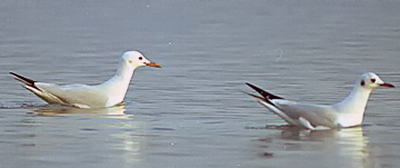
January 9 2002, South Korea. Photo © Busan Kukje Shinmun.
However, as the series of images from South Korea and Kuwait accompanying this note appear to demonstrate, the differences between sibiricus and Larus genei appear to be exactly as documented for ridibundus/genei, while any differences between sibiricus and ridibundus (as suggested by King, and confirmed by personal observations) are very small, and perhaps even largely impossible to confirm in the field: there is thus no increased identification challenge, simply a larger percentage of bigger and longer-billed Black-headed Gulls in eastern than in western populations.
In the image above of South Korea’s first (and so far only) Slender-billed Gull, taken at Gwangyang Bay in January 2002 (for details go to Slender-billed Gull - a new Korean species), the structural differences between the Slender-billed (left) and an east Asian Black-headed Gull, presumed subspecies sibiricus (right), are still striking. Note, despite the date, also the very faint head spot, and the bill shape and colour - deeper scarlet, without an obvious darker tip - of the Slender-billed. Although the eye typically appeared dark, at other angles it showed paler and more translucent.
In direct comparison with nominate Black-headed Gull in March (as in a number of the images below, taken in Kuwait, March 2004), the structural differences between Slender-billed and Black-headed are consistently striking, as are the differences in bare parts colouration.
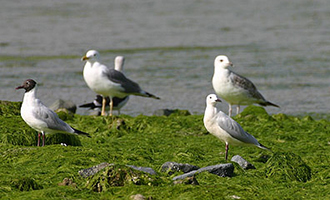
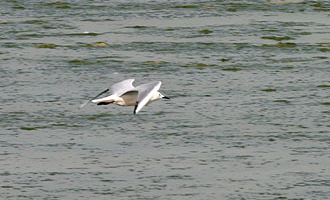
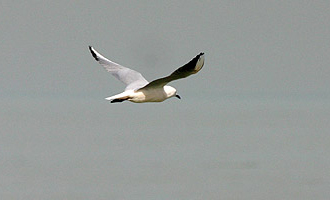
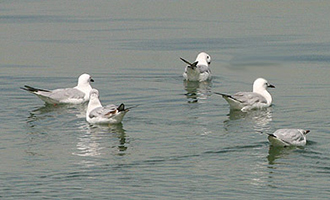
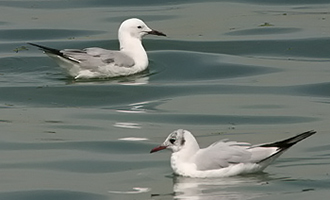
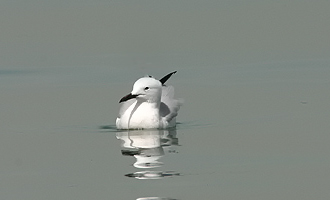
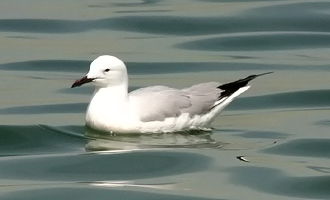
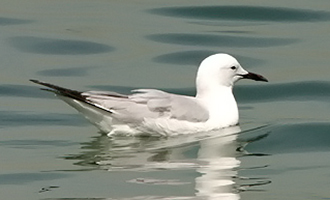
Photos Kuwait, March 05 2004 © Charlie Moores.
Where confusion between Slender-billed Gull and Black-headed Gull may occur is when atypical head-markings or bare-part colouration is shown. Described as "rare" in Malling Olsen and Larsson, very occasional Black-headed Gulls can show abnormal bare parts coloration, most exceptionally showing blackish legs as well as largely blackish-scarlet bills (at least 2 different individuals seen in both March 2003 and March 2004 at different sites showed largely blackish bills: NM pers. obs.)
However, although showing bare parts’ colouration perhaps suggestive of Slender-billed, such individuals (as in the images below) can still be easily identified as Black-headed Gull by their structure alone.
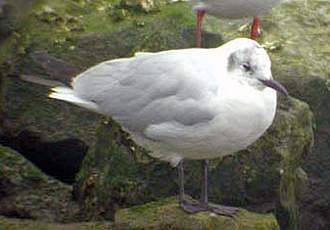
Photo © Nial Moores.
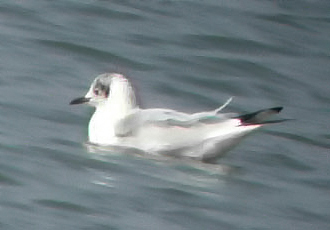
Photo © Nial Moores.
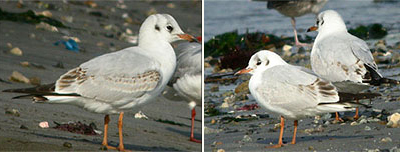
Busan, March 18 2004. Photos © Nial Moores.
Referring back to the comments above, although occasional Black-headed Gull individuals do appear strikingly large and longer-billed most do not: however, at least some authorities consider the majority of Black-headed Gulls in South Korea to be sibiricus, and not the nominate form ridibundus - a taxon apparently yet to be reliably claimed in the country.
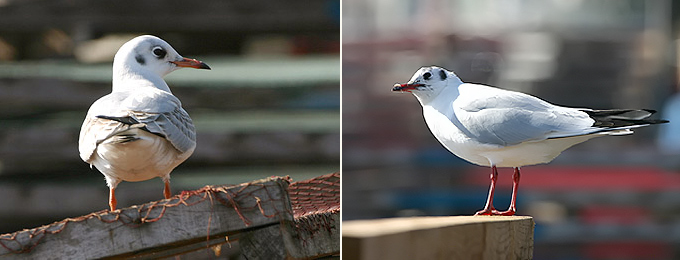
Photos © Charlie Moores.
References:
- Malling Olsen, K. & H. Larsson (2003). Gulls of Europe, Asia and North America. Published by Helm.



